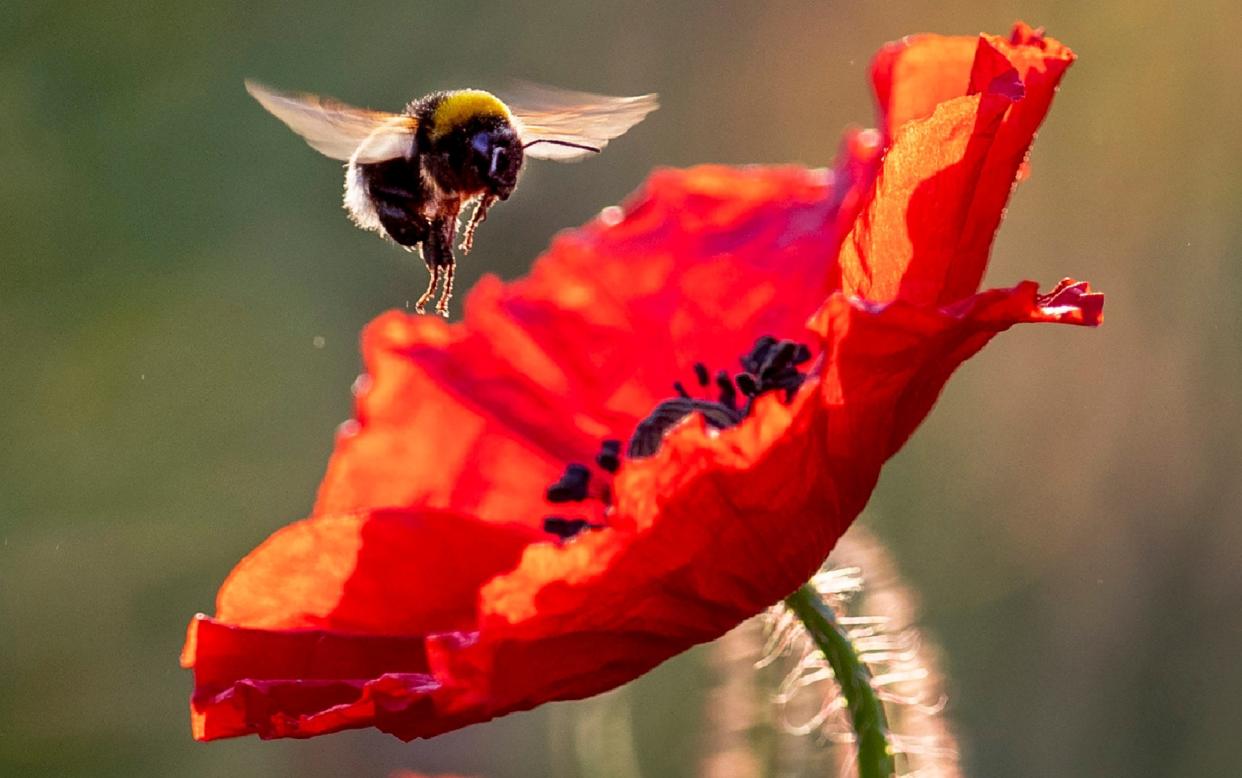Bumblebees busier in the cities than in the country, researchers find

Bumblebees are bigger and more hardworking in cities than in the countryside, according to a new study.
Researchers found the body size of bumblebees in cities is a little larger than their rural counterparts. They say that it means urban bumblebees are able to provide a better pollination service to the ecosystem.
A bigger body size means they are also better suited to an urban environment, where green spaces are separated by a concrete jungle.
Dr Panagiotis Theodorou, of the Martin Luther University Halle-Wittenberg (MLU) in Germany, said: "Living in a city can have both benefits and disadvantages for bumblebees.
"On the one hand, residential gardens and balconies, allotment gardens, botanical gardens and city parks provide rich food sources for bumblebees.
"On the other hand, cities are significantly warmer than their surrounding rural areas."
The habitats of bumblebees and other insects have changed dramatically in the past 200 years, from flowery fields in rural areas to busy roads and skyscrapers.
Dr Theodorou said: "In addition, impervious surfaces, streets and large buildings create considerably smaller habitats that are isolated from one another.
"These might pose a challenge to bumblebees."
Nearly 2,000 bumblebees were collected from metropolitan areas and their rural surroundings in Germany.
Three locally common species, the red-tailed bumblebee (Bombus lapidarius), the common carder bee (Bombus pascuorum) and the buff-tailed bumblebee (Bombus terrestris), were concentrated on by the researchers.
The team measured the body size of each bumblebee and found the city dwellers were larger across all three species.
The study's co-author Dr Antonella Soro, also of MLU said: "Our results show that bumblebees from more fragmented urban areas were larger compared to their rural counterparts, by around 4 per cent."
An organism's body size is linked to its metabolism and the environment in which it spends most of its time.
Dr Soro said: "Larger bumblebees can see better, they have larger brains and they are better in learning and memory. They are also less likely to be attacked by predators and can travel greater distances, which is an advantage in a fragmented landscape such as the urban one."
The number of seeds produced by potted red clover plants at each location was also counted to determine the level of pollination.
Dr Soro said: "Large bumblebees visit more flowers per flight and are capable of depositing a higher number of pollen grains on stigmas, which makes them better pollinators."
The stigma is the part of the plant that receives pollen and it is on the stigma pollen grains germinate.
The findings show how fragmented habitats such as cities can affect a bumblebee's physical appearance and indirectly influence pollination.
Dr Theodorou added: "There are still a lot of open questions regarding the effects of urban-related environmental changes on bees and pollination.
"Further studies are needed to better understand the evolutionary responses of bees to urbanisation, information that can help improve urban planning."
The findings were published in the journal Evolutionary Applications.

 Yahoo News
Yahoo News 
